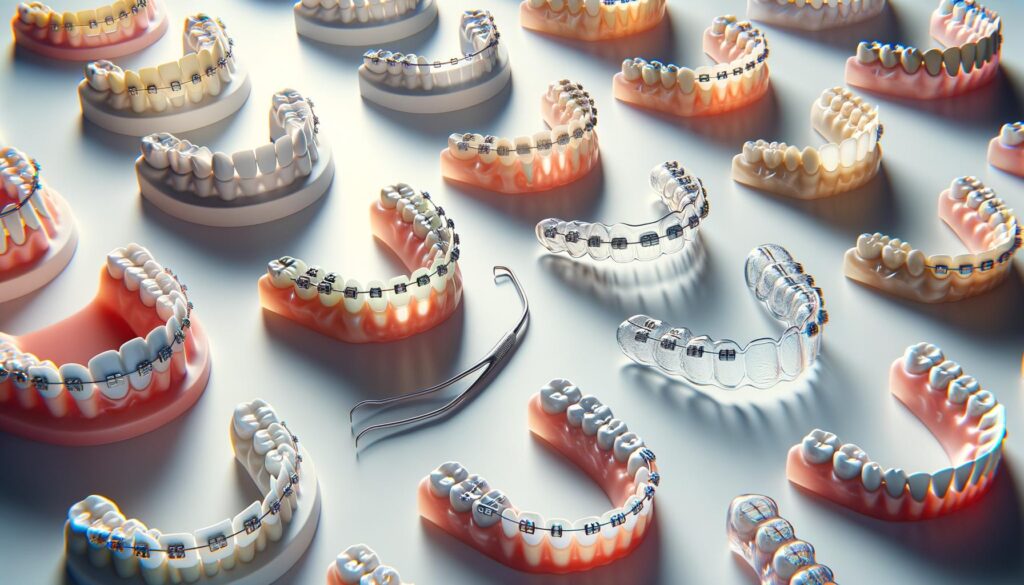Discovering Top Options for Dental Braces and Treatment Centers

Understanding Different Types of Braces
When it comes to choosing dental braces, understanding the different options available is crucial. Traditional metal braces, typically the most well-known, are highly effective and cost-efficient. They involve metal brackets and wires that gradually align your teeth over time. Nowadays, metal braces are far less bulky than their predecessors, offering a more comfortable design.
For a less noticeable option, ceramic braces might be appealing. Ceramics match the color of your teeth, offering a more discreet appearance. However, they tend to be a bit more expensive and require diligent maintenance to prevent staining.
Another sought-after option is clear aligners, which are transparent and removable. These appliances offer flexibility as they are typically worn 20-22 hours a day, allowing for removal during meals and brushing. Clear aligners can treat mild to moderate dental misalignments effectively, although they might not be suitable for complex cases.
Each type of brace has its pros and cons, and discussing these with a dental professional can help determine which is the most suitable for your needs.
Researching Dental Centers Thoroughly
Finding the right dental center is another critical aspect of starting orthodontic treatment. One effective way to search is by looking at centers that are highly rated and well-regarded by previous patients. Online reviews and testimonials can offer valuable insights into the quality of care provided.
Consider the qualifications and experience of the orthodontists at each center. Centers that boast seasoned professionals often provide exceptional quality of care. Explore their certifications and affiliations with professional dental organizations to ensure their credibility.
Convenience is another factor to take into account. Opting for a dental center close to home or work can save time and make regular visits less burdensome. Availability of financing options and acceptance of insurance plans can also play a pivotal role in selecting the right center.
Don’t hesitate to call centers for a preliminary consultation or visit their facilities to gauge the environment and meet the staff, which can help in making an informed decision.
Evaluating Cost and Financing Options
Dental braces can be a significant investment, making it vital to evaluate the cost and financing options before committing to a treatment plan. The cost can vary depending on the type of braces, the complexity of the orthodontic issue, and the geographic location of the dental practice.
When estimating costs, ask for a detailed breakdown that includes initial fees, monthly adjustments, and post-treatment retainers, ensuring there are no hidden charges. Some centers might offer payment plans that distribute the cost over a longer period, potentially making orthodontic treatment more manageable.
Insurance coverage is also worth exploring. Many dental insurances provide partial coverage for orthodontic treatments, so understanding the scope of your benefits can have a significant impact on out-of-pocket expenses.
Remember, investing in your dental health can have lasting benefits, so focus on the quality and effectiveness of the treatment along with the cost.
Importance of Consultation and Diagnostic Planning
A comprehensive consultation is essential to assess the severity of any misalignment and to develop an appropriate treatment plan. During the initial consultation, the orthodontist may take X-rays, bite impressions, and photographs of your teeth to analyze your dental structure in detail.
Consultations provide an opportunity to ask questions and express any concerns about the treatment process, including the expected timeline and potential outcomes. Make sure to discuss any specific goals you have about the alignment and aesthetics of your smile.
The diagnostic planning stage should also include a discussion of the risks and benefits of each type of brace, ensuring you are fully informed of what to expect. An individualized plan that is specifically tailored to your needs can make the treatment process smoother and more successful.
Don’t rush this phase, as careful planning can lead to better long-term results and satisfaction with the treatment.
Maintaining Oral Hygiene During Treatment
Maintaining meticulous oral hygiene is critical throughout the orthodontic treatment regimen. Braces create additional nooks where food particles and plaque can accumulate, increasing the risk of dental issues if not properly managed.
Regular brushing with a soft-bristle toothbrush and fluoride toothpaste is essential. A specialized orthodontic or interdental brush can also reach around brackets and wires more effectively, removing debris that a standard brush might miss.
Flossing should not be neglected. Using floss threaders or orthodontic flossers makes cleaning between and around braces easier. There are also oral irrigators that can help rinse away food particles and reduce plaque buildup.
Routine dental checkups and cleanings are equally important, as professional assessments can catch any potential problems early, ensuring your teeth and gums remain healthy throughout the treatment.
Conclusion: Making an Informed Choice
Choosing the right dental braces and treatment center requires careful consideration of various options and factors, from the type of braces to the cost and the quality of care provided. By being informed and proactive, you can find the treatment that fits best with your dental needs and lifestyle.
Remember, understanding the intricacies of different braces and planning your treatment journey thoughtfully can lead to a more satisfying outcome. The path to a straighter, healthier smile begins with informed decisions and dedicated commitment to maintaining oral health throughout the process.
